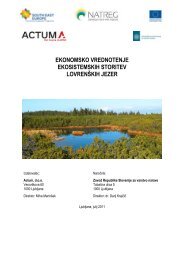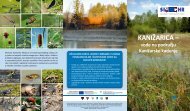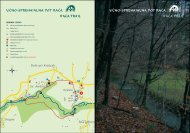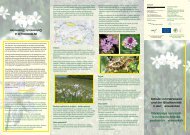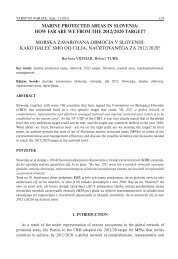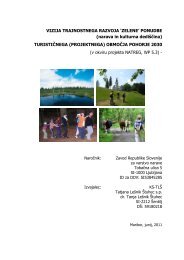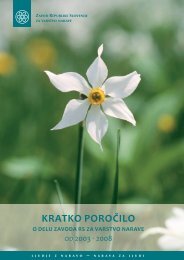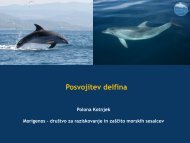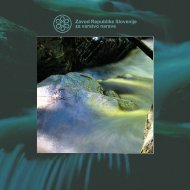Monitoring MPA visitor uses handbook
Monitoring MPA visitor uses handbook
Monitoring MPA visitor uses handbook
- No tags were found...
You also want an ePaper? Increase the reach of your titles
YUMPU automatically turns print PDFs into web optimized ePapers that Google loves.
ForewordTourism in the MediterraneanTourism is a vital economic activity for all countries aroundthe Mediterranean Sea. Given their location at the crossroadsbetween three continents, these countries attract30% of global international tourist arrivals. In 2007, theyreceived some 275 million international tourists. Tourismis therefore a source of employment and foreign currencies,and greatly contributes to economic developmentin Mediterranean countries.Tourist activities generate two kinds of environmentalimpact: impacts caused by <strong>visitor</strong> movement and thosecaused by <strong>visitor</strong> accommodation. As tourism in theMediterranean is very much based on the sea, all facilitiesspecifically constructed along the coast contributeto the impairment of natural shorelines. Development ofrecreational boating further contributes to the phenomenonwith the construction of space-consuming harboursand marinas.These impacts are heightened by their concentration intime (summer season and school holidays) and in space(along the coast, in the mountains, in certain towns andon major sites). The high population density generatespressure on water resources and natural environmentsand an increase in waste production (Source: Plan Bleu).Marine protected areas and tourismThe natural environment of marine protected areas is akey resource for tourist leisure activity in the Mediterranean.Tourism is therefore by far the main activity thatinterferes with marine protected areas.Mass tourism places considerable pressure on the environmentsprotected by marine areas located in the vicinityof tourist flows. Tourist activities must therefore bemanaged sensibly, and in a manner compatible with theprotection of natural resources.While managers of marine areas have no way of influencinglocal tourism overall (development of rental accommodationaround a protected area, development of aregional tourism diversification policy for example), theycan however take action in the sectors of leisure activitiescarried out on their sites (boating, diving, surfing,recreational fishing, etc.).Need for tourist use informationTo develop ecologically responsible tourism, touristactivity management should be planned as part of themanagement plan generally implemented within the frameworkof marine protected areas.In this respect, knowledge and scientific monitoring oftourist use and the impacts of tourism are a necessityfor managers keen to preserve the good environmentalstatus of a marine protected area. Even if the means arelimited, <strong>MPA</strong>s must be able to monitor variations in touristpractices, with the same conviction and similar resourcesto those employed to monitor natural heritage.Regular observation of tourist and other <strong>uses</strong> is today akey factor in good area management.In-depth knowledge of tourist activities will enable managersto take appropriate management measures suchas the establishment of <strong>visitor</strong> quotas, site developments(organised moorage for example), pricing policies, wastemanagement, etc.Produced within the framework of the MedPAN NordEuropean project coordinated by WWF-France underthe stewardship of the MedPAN network of Mediterraneanmarine protected area managers, this guide aimsto held managers understand tourist <strong>uses</strong> and introduceappropriate monitoring systems in their <strong>MPA</strong>. TABLE OF CONTENTS 8 COLLECTION VISITOR USE OBSERVATION AND MONITORING IN MEDITERRANEAN MARINE PROTECTED AREAS



